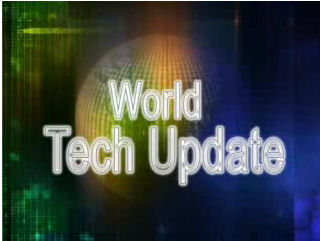If you think the iPhone's touch screen is cool, imagine a device that actually sees, reflects, and responds to your fingers touching the back of the device.
A prototype of that capability was among many that Microsoft Research showed off at TechFest, Microsoft’s annual display of research projects at the company.
LucidTouch isn't very practical in its current form . It's a large handheld computer with a small video camera attached on an arm about a foot's length off the back of the device. But the technology that enables it could easily change now that the concept is proven, said Patrick Baudisch, a researcher at Microsoft.
The current setup includes a touch sensor layer on the back of the device. That senses when a user's fingers are touching it. The camera attached behind it sends an image of the user's fingers to the device, where the image is overlaid lightly, like a shadow, on the screen. Baudisch calls it "pseudo-transparent."
In his prototype, he showed a map on the device screen. Moving his fingers on the back of the device, he could choose an item on the map. The concept solves the "fat finger problem," where your finger covers up the actual spot that you're trying to touch on the screen, he said.
The invention would be particularly useful on very small devices. For example, a watch with a touch screen would be very difficult to use with a finger because users' fingers are quite large relative to the size of the small screen. With LucidTouch, a user could touch an area on the wristband of the watch instead to make choices on the watch face.
The clunky camera arrangement in the prototype might be replaced by a couple of other technologies, including one that another group is working on that would use infrared to pick up finger movements, Baudisch said.
Microsoft researchers also showed off a couple of ideas that use wireless technologies. One group envisions using standard cell phones to help people choose their routes through traffic.
The concept uses phones already on the market that contain GPS microphones and accelerometers. Those sensors are used to collect data about phone users' progress as they travel around a city in a car, sending that information back to a central site that interprets it.
Accelerometers in phones are currently used to detect when a phone is tilted in order to shift the display from landscape to portrait mode. But in this application, the accelerometer is used to sense how often a driver has to hit the brakes, said Ramachandran Ramjee, a Microsoft researcher. The microphone can pick up the sound of the car horn, a possible indication of congestion. The accelerometer can even detect when a user hits a pothole, so the phone could identify issues for road crews.
The data the phone collects is sent wirelessly to a site that compiles it so that users can check the site to find out where there might be congestion on the roads.
"GPS might be good enough in Seattle, but in Bangalore, where traffic is chaotic and there is lots of honking and braking, it would be great to identify this automatically," said Ramjee.
Another wireless invention from Microsoft researchers could help improve the way devices like the Zune use Wi-Fi networks. While many engineers have worked on systems for optimizing the use of radio spectrum, this one is different, said Thomas Moscibroda, a Microsoft researcher. The project he is working on dynamically narrows the wireless channel that a device is using. Typically, Wi-Fi devices use a 20 MHz-wide channel. Microsoft's software, however, can dynamically adjust that down to 5 MHz or 10 MHz, depending on the application.



 Talkback
Talkback E-mail
E-mail Printer Friendly
Printer Friendly Reprints
Reprints
 Download the Windows Server(R) 2008 Beta: Join the global community.
Download the Windows Server(R) 2008 Beta: Join the global community. Why is everyone talking about Virtualization?
Why is everyone talking about Virtualization?













